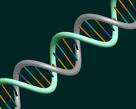
Washington: A new discovery holds out the prospect of keeping old age at bay by targeting “longevity” genes.
Scientists have identified 25 genes that regulate lifespan in two organisms separated by 1.5 billion years of evolution.
They believe at least 15 are likely to have similar versions in humans. Affecting their activity could provide a way to slow down the ageing process and treat age-related conditions.
Dr Brian Kennedy, one of the researchers from the University of Washington in Seattle, US, said: “Now that we know what many of these genes actually are, we have potential targets to go after in humans.
“We hope that in the future we could affect those targets and improve not just lifespan, but also the ‘health span’ or the period of a person’s life when they can be healthy and not suffer from age-related illnesses.”
The two organisms studied by the scientists were yeast and the tiny roundworm Caenorhabditis elegans.
Both are commonly used laboratory tools. The researchers say finding genes that are conserved between them is important because they are so far apart on the evolutionary scale. Yeast and C. elegans are even more widely separated than C. elegans and humans.
Similar types of genes are known to exist in humans. Taken together, the evidence suggests that longevity genes are likely to influence human lifespan as well.
Several of the genes shown to be involved in ageing are also linked to a key nutrient pathway called the Target of Rapamycin, or TOR.
Calorie intake and nutrient response are believed to affect lifespan through TOR activity. Previous studies have shown that drastically restricting the diets of animals ranging from worms to monkeys can prolong lifespan and prevent age-related diseases.
